Overclockable Pentium Anniversary Edition Review: The Intel Pentium G3258
by Ian Cutress on July 14, 2014 10:00 AM EST- Posted in
- CPUs
- Intel
- Pentium
- Overclocking
- Pentium-AE
- G3258
Discrete GPU Gaming
When comparing CPUs to APUs, one strength shown by team Blue in the past is the discrete GPU performance. When using dual graphics cards at a 1920x1080p resolution, at a lower amount of CPU power overall, there tends to be a significant amount of variance when extra CPU performance is applied. While it seems the overclock numbers are nice for a Pentium, a little extra money for an i3 at stock seems to be the choice here.
F1 2013
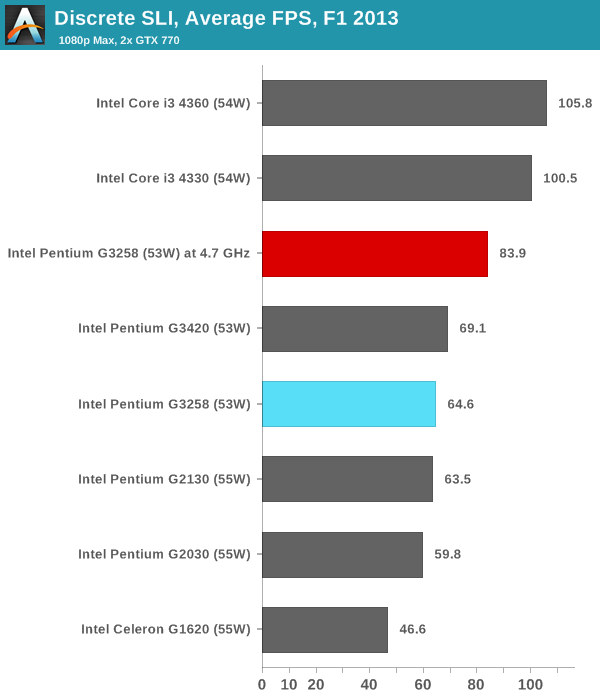
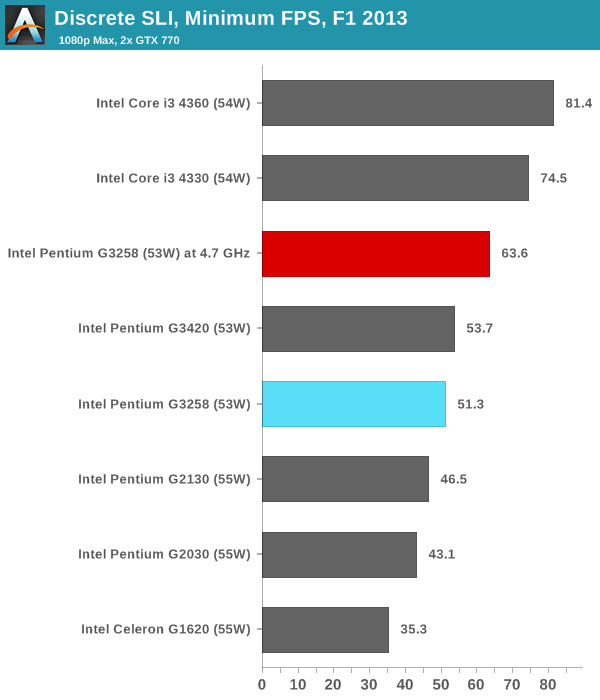
Bioshock Infinite


Tomb Raider

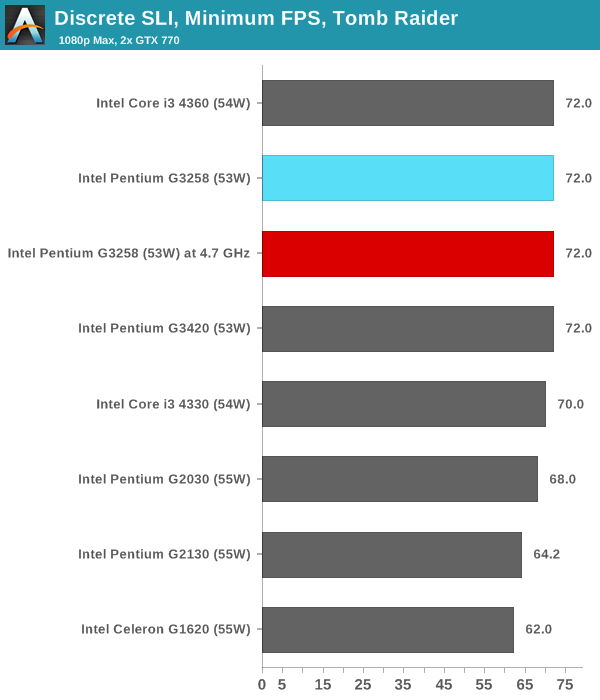
Sleeping Dogs

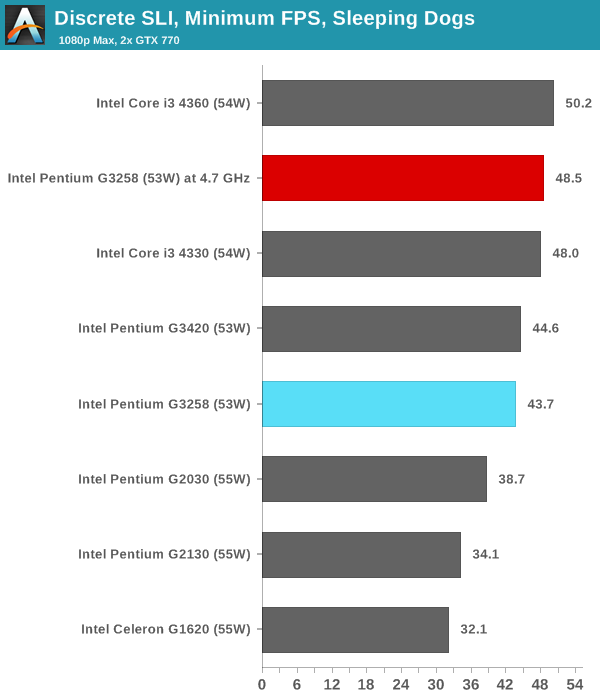
Company of Heroes 2
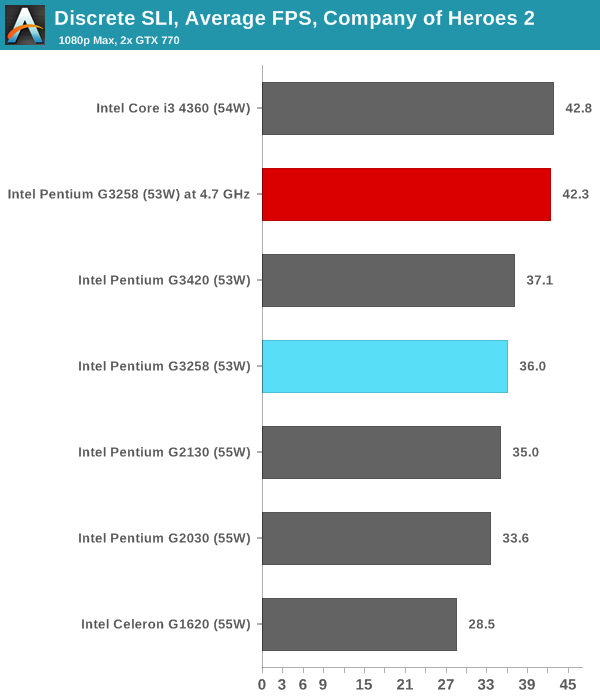

Battlefield 4
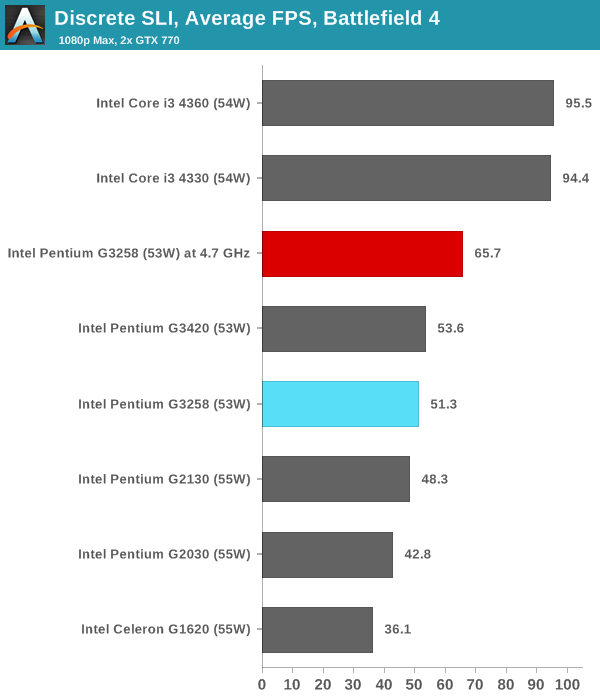
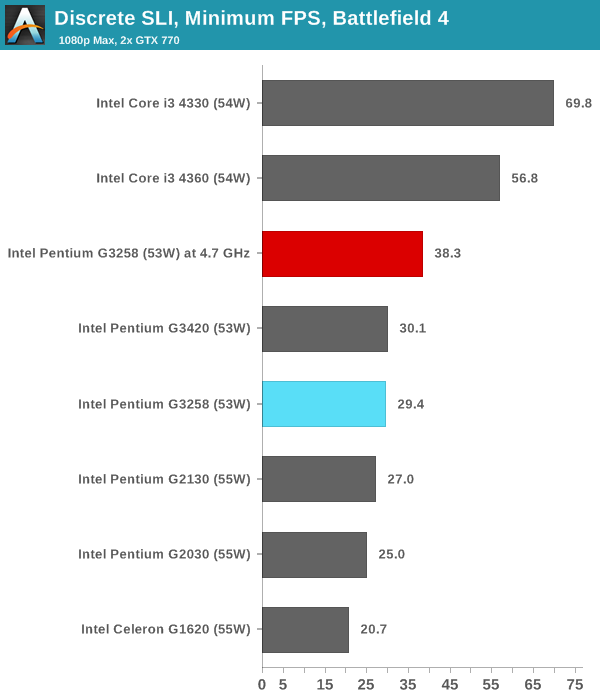
All of our titles, except Tomb Raider, get a significant increase from overclocking the CPU. However, it is worth noting (especially in titles such as Battlefield) that using and i3 from the start gets an even better result. This is because the gaming industry has moved on from the last overclockable dual core Intel CPU - games can now take advantage of more cores, and that jump from 2 cores to hyperthreading lets a high end title stretch its legs a little more than a simple overclock.










96 Comments
View All Comments
Ian Cutress - Monday, July 14, 2014 - link
Here is the FX-6350: http://www.anandtech.com/bench/product/1281Computer Bottleneck - Monday, July 14, 2014 - link
Non-Z motherboards capable of 4.5 Ghz with stock cooler start at $60 (and probably go cheaper than that.)So a Z board for overclocking Pentium G3258 is not necessary.
shortstuff - Monday, July 14, 2014 - link
What were the other components used during the test? I thought the test system components would be listed in the article.hojnikb - Monday, July 14, 2014 - link
Is pentium line using the same die as i3 ?Also, is intel planning on making more of these unlocked pentiums in the future (broadwell) or was this a one time dela ?
extide - Tuesday, July 15, 2014 - link
Yes, they are the same exact dies, pretty much. If Intel did it anything like they did with ivy Bridge, then basically there are 4-6* dies for the consumer Haswell chips. These dies are used in all lines from Celeron, to Pentium and i3/5/7, desktop AND mobile chips.2c/3MB/GT1
2c/4MB/GT2
4c/6MB/GT1
4c/8MB/GT2
*The R-series CPU's use 1 or 2 additional different dies. I know there is a 4c version, which has 6 or 8MB of L3, and GT3, and there may also be a 2c version as well, but I am not sure.
extide - Tuesday, July 15, 2014 - link
EDIT: For chips like the Celerons with 2MB of L3, they disable some of the L3 cache. Sometimes a SKU will use a 'higher'/bigger die than you would expect, with some parts disabled. It just depends on what Intel feels like doing/has more of at the time/etc.KAlmquist - Monday, July 14, 2014 - link
For an allegedly "unlocked version," the G3258 certainly has a lot of stuff locked.- Half of the GPU execution units (10 out of 20) are locked.
- One MB of cache is locked.
- The AVX instructions are locked.
- The AES instructions are locked.
- The transaction instructions (TSX-NI) are locked.
- I/O virtualization (VT-d) is locked.
- Hyperthreading is locked.
I'm sure that there is more stuff that I've missed. I'd guess that Intel has made somewhere around one third of the circuitry on the chip unusable.
MikeMurphy - Monday, July 14, 2014 - link
Nobody would be buying the more expensive i5 and i7 k-series CPUs if these weren't sufficiently impaired.It's a good CPU for someone who was going to buy a Pentium anyways. It shouldn't be changing much in terms of purchasing decisions otherwise.
OrphanageExplosion - Monday, July 14, 2014 - link
My guess is that we won't see an overclocked i3 because with 4.5GHz, hyper threading and a bit more cache, suddenly there's little need to buy a non-K i5 any more in a majority of use-case scenarios.SolarAxix - Monday, July 14, 2014 - link
Very good article.I actually bough a Pentium G3258 along with an MSI Z97 PC Mate for $99 plus tax at Microcenter.
I didn't expect anything magical from this purchase. It was easy to justify since I was getting the processor and the motherboard for less than the sale price of the motherboard which sells for $109.99.
I can see this being a great machine to surf the web and to do some Steam In-Home Streaming. Even OC to 4.5/4.6, it doesn't use much in electricity when it idles plus I got to upgrade my current low-end system with this new system. It has USB 3 and SATA 3 ports and a newer audio codec. Overall for me, it was a no-brainer. If it was more than $100, then I am not sure if I would made the jump or not.
If you are lucky enough to be close to a Microcenter, then this is a great deal for a low-end spare PC to play with.
( http://www.microcenter.com/site/brands/G3258Bundle... )